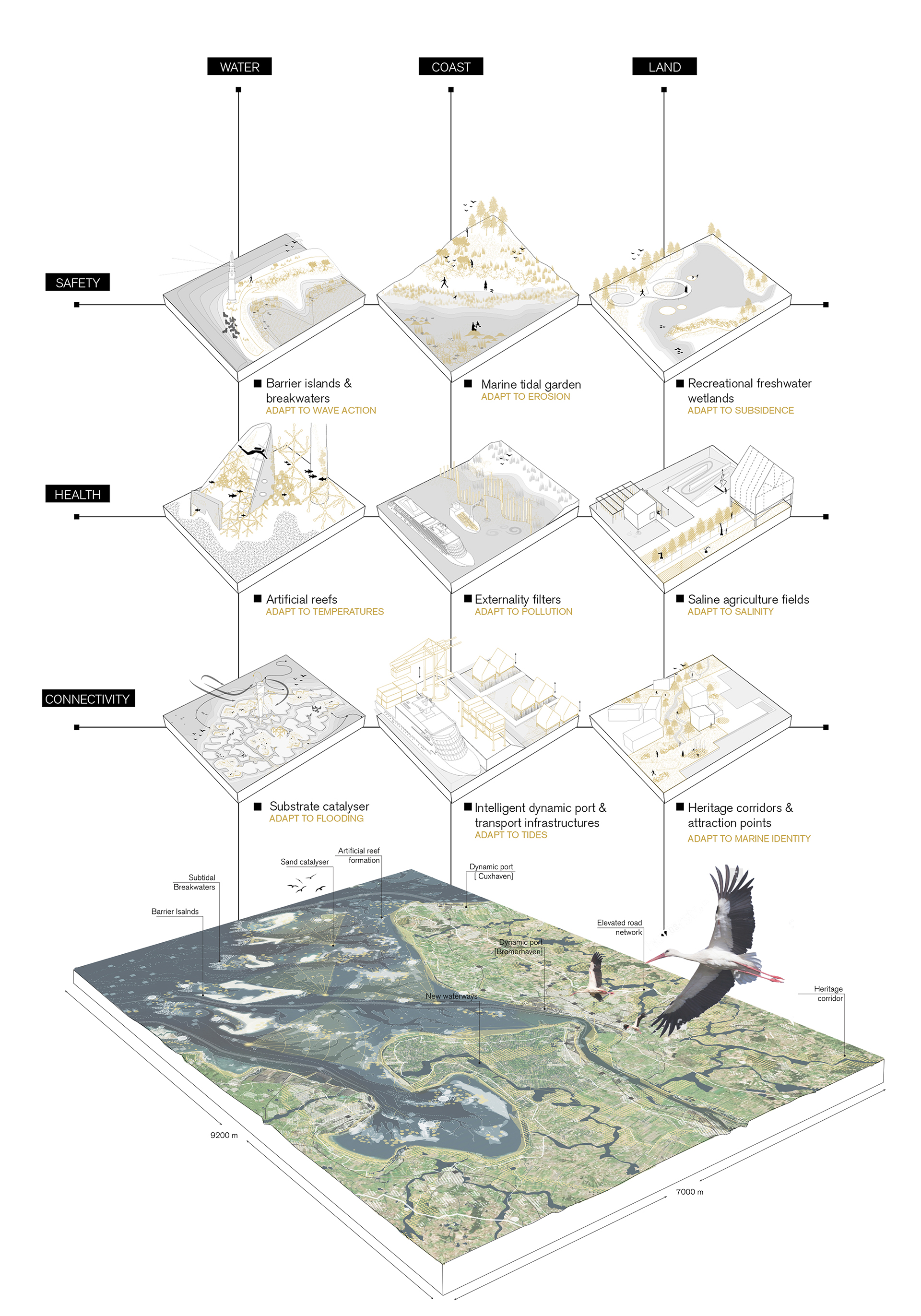Nicole Garcia Vogt
Urban Transformations & Sustainability: Transitional Territories

Synchronizing habitat - Risk adaptation by the co-evolution of the environment and society
An ambiguity prevails in respect of the magnitude and rate of changes in the environment by 2100, but certainly, inundation will drown habitats; sea temperature rise will reduce water quality; and the demand on expanding ports will generate more pollution by ship traffic and industrial areas. At the Weser Estuary in particular, spatial measures have moved from the exploitation to the conservation of ecology, and they currently focus on shepherding nature by integrating it into our constructed systems.
However, this perspective overlooks the benefits resulting from the synergy between human life, nonhuman life and the environment. The project recommends looking into a partnership with nature to regenerate the multi-equilibria state of the coast through an ecosystem succession approach. The gradual creation of infrastructures that integrate environmental processes can provide different living species with a habitat. Proposing habitats where dissimilar socio-ecological activities can interact (ecotone enhancement) will allow communities to embrace constant change.